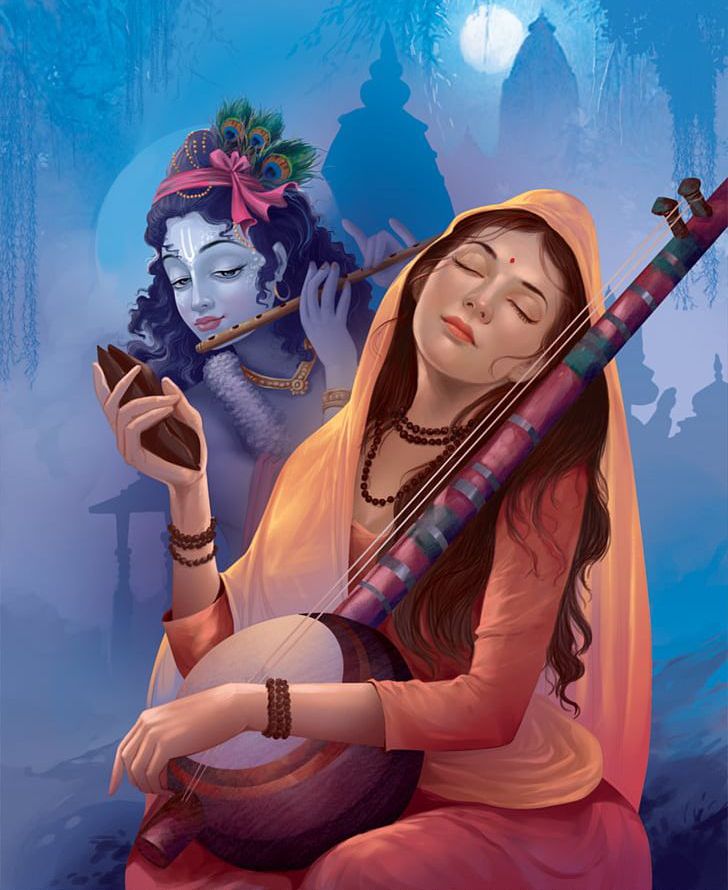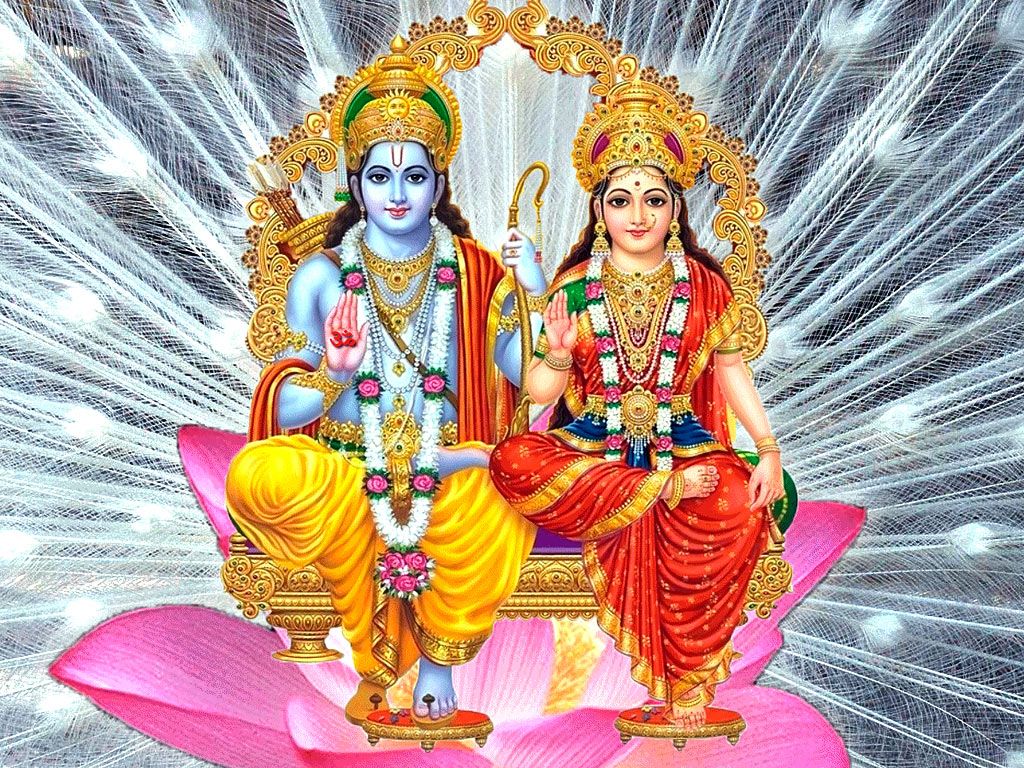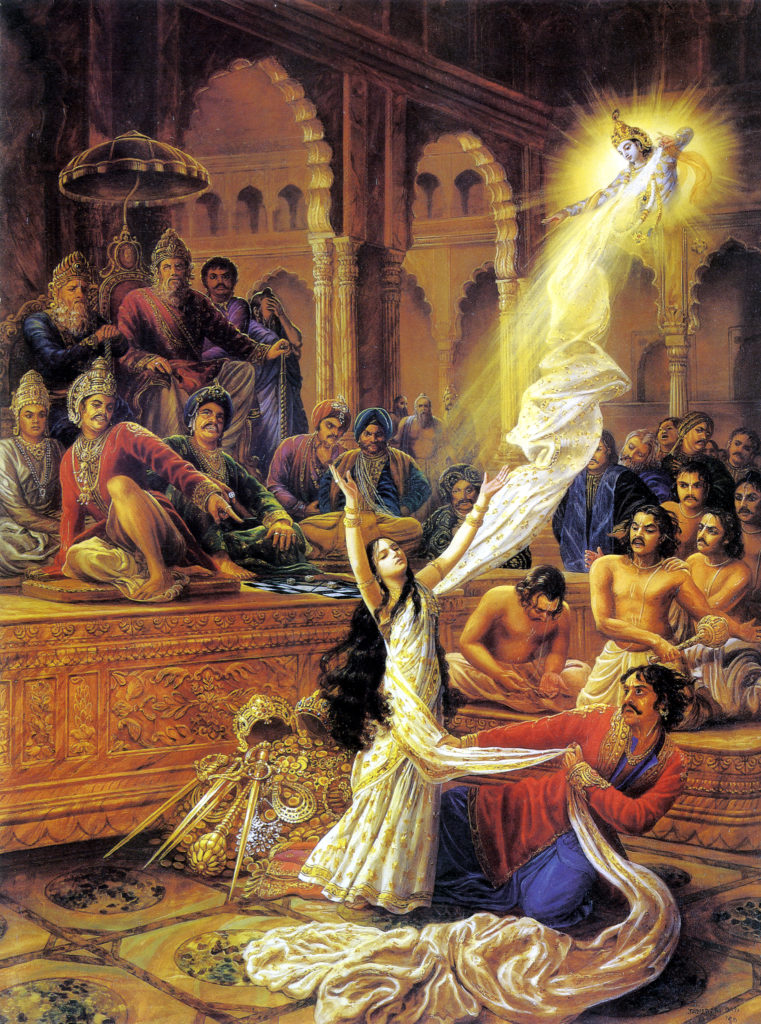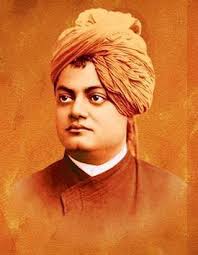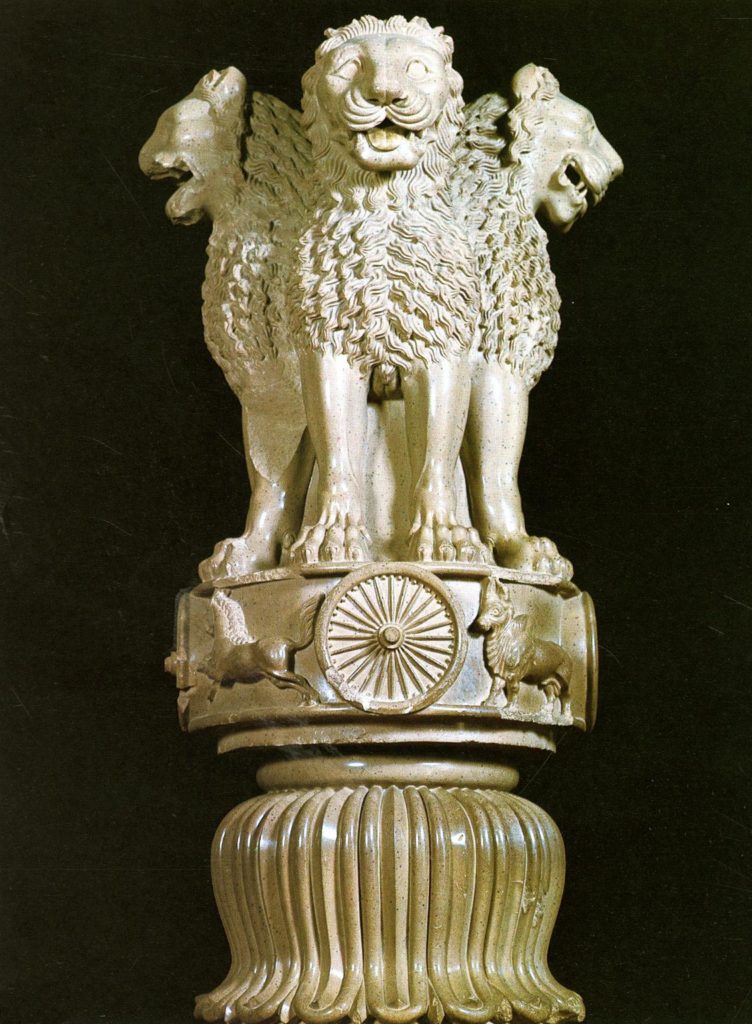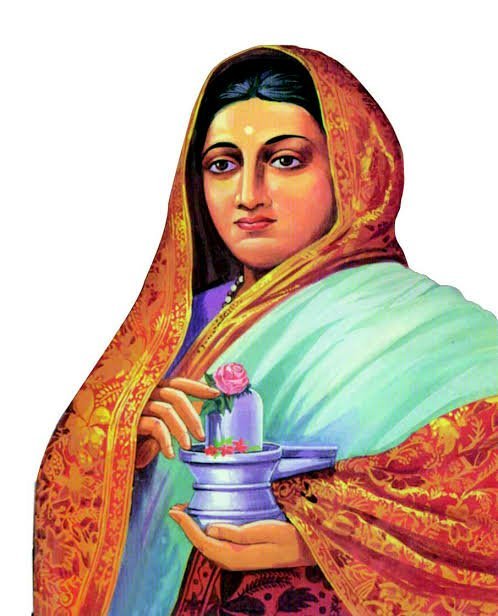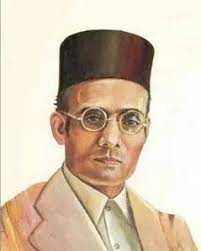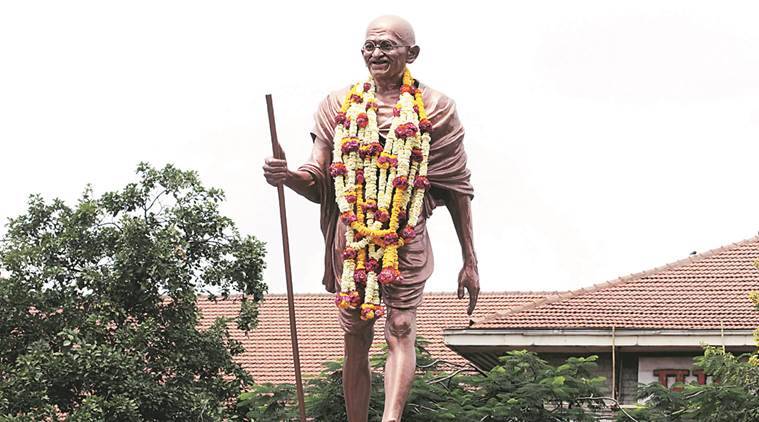Author – Awadhesh Sharma
Karna is one of the main characters of the epic the Mahabharat and has a divine origin.
Once sage Durvasa visited king Kuntibhoj seeking his hospitality. The king welcomed the sage and appointed his adopted daughter Kunti to look after him. Kunti took care of his needs and kept the sage pleased.
The sage was so impressed with her services that at the time of his departure, he offered Kunti a boon of her choice. She assured him that his good opinion was enough reward for her. However, the sage felt obliged and gave her a Mantra. He promised that it would be useful in her future and with its help she could summon any deity to do her bidding.

Kunti was curious about the authenticity of the Mantra. One day, she got up early in the morning and looked at the rising sun. She wished to test the veracity of the Mantra and chanted it to summon the deity of light Surya, the Sun. To her surprise, Surya appeared before her in person and asked her what she wanted. She said that she did not want anything and requested him to leave her alone. Surya refused to leave without giving her a son to maintain the sanctity of the Mantra.
As a result, a baby was born to Kunti wearing a golden Kawach, armour and Kundals, earrings. He later became illustrious Karna. Kunti was scared realising that delivering a baby before marriage would reduce her and her family’s social standing. She abandoned the child before anyone knew about him. She placed the child in a basket and set it afloat on a river.
A childless Suta, charioteer, named Adhirath noticed the floating basket with the baby and brought it home. His wife Radha was overjoyed. They adopted the baby as their son and named him Vasushen, the one born with wealth of Kawach and Kundals. He was also addressed as Sutaputra and Radheya.
Later, Kunti married prince Pandu of Hastinapur. Due to a curse, Pandu could not have children. He retired to the forest with his wives Kunti and Madri. Following a discussion with Pandu, using Durvasa’s Mantra, Kunti gave birth to Yudhisthir, Bhim and Arjun through deities Dharmaraj, Vayu, and Indra respectively. She also shared the Mantra with Madri, who became the mother of Nakul and Sahadeo through the deity Ashvinikumar. All five brothers were born in the forest and were known as Pandavas. Pandu died soon after their birth. Madri followed her husband and joined him on the funeral pyre.
Kunti brought the children to the capital Hastinapur where Pandu’s brother Dhritrastra was ruling the kingdom on his behalf. She placed the sons into the care of elders including grandfather Bhishma and wise Vidur. Dhritrastra had one hundred sons, commonly known as Kauravas. Duryodhan was the eldest. They did not like Pandavas and developed animosity toward them.
Karna often visited Hastinapur and observed the royal children’s enmity. He became a pupil of teacher Dronacharya who taught both Pandava and Kaurava princes. Dronacharya was partial towards Arjun and trained him to become the greatest archer. Karna was equally talented and wished to acquire all the skills of archery and other weapons. Dronacharya declined to teach him Brahmastra, the weapon of Brahma, noting that it was meant only for high-born candidates.
Karna left Dronacharya and went to Parashuram, a great teacher of martial art. He presented himself as a Brahmin youth keen to learn weaponry skills from him. Parashuram was impressed by Karna’s enthusiasm, and accepted him as his student. He taught him all the weapons including the Brahmastra.
One day Parashuram was resting with his head on Karna’s lap. A small insect started piercing Karna’s thigh. He felt severe pain but did not remove the insect assuming that the movement would disturb his Guru’s rest. Soon blood started flowing from Karna’s body. With contact of the warm blood, Parashuram woke up and noticed what had happened. He told Karna that he could not be a Brahmin. He insisted on knowing his true identity.
Karna confessed that he was the son of a Suta and begged his pardon. Parashuram felt deceived and became angry. He pronounced a curse on him. “For deceiving your Guru, your knowledge of weapon will fail you when you need it most.” Karna felt dejected and walked away from the Guru’s hermitage.
On the way, suddenly an animal rushed past him. Without thinking he drew his bow and discharged an arrow on the animal killing it. He walked towards the dead animal. It was a cow. Instantly its owner a Brahmin arrived there. He accused Karna of killing his innocent cow. Karna attempted to pacify him and offered reparation. However, the Brahmin did not accept his offer and cursed him. “You will be killed when you are helpless to defend yourself just like this innocent cow you killed.”
Having gone through misfortunes, Karna returned to his mother Radha for solace.
After sometime he became aware of an open tournament being held in Hastinapur. Kaurava and Pandava princes were to demonstrate their skills in martial art. The display of their skills started with fanfare. Elders, teachers and the general public attended the exhibition.
During the display, Arjun performed many supernatural feats and was almost declared a champion of the day. Suddenly Karna appeared in the arena. He announced to the audience that he could match all acts that Arjun had completed. Being an open tournament he was allowed and he did perform all those deeds.
The audience was impressed. Duryodhan recognised Karna as a fitting opponent of Arjun.
Karna challenged Arjun for a competition. Guru Kripacharya came forward and asked for his identity. As Arjun was a Pandava prince, he could only fight with a person equal in birth and status, a prince or a king. Karna felt mortified in revealing his identity as a Suta’s son. At that moment Duryodhan appeared before him. He crowned Karna as the prince of Angadesh to make him equal in status.
Just then Adhirath came towards the stage. When Karna saw him, he greeted him bowing down his head. The charioteer addressed the newly appointed prince as “my son” and embraced him.
Seeing this, Bhim realised that Karna was Adhirath’s son and commented with scorn, “O son of a charioteer, you are not entitled to death in battle with Arjun the son of Kunti.” Hearing this Duryodhan sprang up in support of Karna and reprimanded Bhim.
Kunti was present in the arena and witnessed the humiliation of her first-born son, whom she recognised through his Kawach and Kundals, but remained silent. As the princes were arguing their points, the sun set in the horizon. The display of skills was declared over.
Karna was so obliged to Duryodhan for his support that he committed to a lifelong friendship with him. He vowed to sacrifice his life for him and became a member of Duryodhan’s inner circle.
Karna attended Draupadi’s Svayamvar. Draupadi humiliated him by refusing to allow the charioteer’s son to participate in it.
Karna was present during the game of dice between Pandavas and Kauravas. As a revenge for her action in the Svayamvar, he made vulgar comments against Draupadi during the robbing of her dress.
The enmity between Kauravas and Pandavas intensified. Impelled by his loyalty to Duryodhan, Karna blindly sided with him and promised to kill Arjun in battle.
Pandavas were exiled and it became obvious to deities that a war between Kauravas and Pandavas was eminent. As long as Karna remained equipped with his Kawach and Kundals he could not be killed.
Karna was a generous man. Anybody who came to him during his sun worship asking for a gift did not return without it. Indra was worried about his son Arjun so he planned to deprive Karna of his Kawach and Kundals, which made him invincible.
The night before Indra was to execute his plan, Surya, Karna’s divine father appeared before him in dream and told Karna about Indra’s plan. He advised him not to part with his Kawach and Kundals at any cost. However, Karna refused to deviate from his act of charity.
Indra appeared before Karna as a Brahmin and asked for a gift of Kawach and Kundals. Karna recognised that the person asking for the gift was Indra. He removed them from his body using a knife and gave them to Indra.
Indra felt ashamed of his own greed to favour Arjun and for depriving Karna from his natural protection. He gave Karna a divine spear that would not miss the target but it could be used only once and after that it would return to Indra. It was a consolation, but Karna felt cheated by fate. He intended to use this spear against Arjun.
After return of Pandavas from the exile they sought their kingdom back. Krishna as a well-wisher of Pandavas went to Hastinapur to negotiate with the Kauravas. Duryodhan declined to give any land without war and tried unsuccessfully to arrest Krishna. When the mission failed and Krishna was to return to Pandavas’ camp, Karna came to see him. He was apologetic for Duryodhan’s behaviour.
During the meeting, Krishna told him the story of his birth and asked him to join his natural Pandava brothers, as he was also a son of Kunti. However, Karna refused to join them and abandon Duryodhan. He also requested Krishna not to tell the story of his birth to Yudhisthir. If Yudhishthir knew, he would abdicate the kingdom in his favour and he would give it to Kauravas.
Before the start of the Mahabharat war, Kunti came to Karna who was offering oblations to the deity Surya in the River Ganga. She begged him to return to Pandavas’ side. Karna realised his dilemma. He promised that she would remain the mother of five sons. He would target to kill only Arjun among Pandavas. If Arjun killed him then all her sons would remain as it was. If Arjun were killed then he would join Kunti as her son.
During the war, Karna refused to fight under the leadership of Bhishma who became the Chief of the Kauravas’ army. Bhishma was critical of Karna and blamed him for inciting Duryodhan for the war. However, when Bhishma fell on the tenth day of the war, Karna visited him to pay him respect. Bhishma praised Karna for his commitment to friendship and blessed him.
Karna joined the war on the eleventh day when Dronacharya became the Chief of Kauravas’ army. On the fourteenth day Bhim’s son Ghatotkach, a Rakshas fighting from the Pandavas’ side, inflicted heavy loss on the Kauravas. Karna was forced to use his Indra spear on him. It killed Ghatotkach but Karna lost his mighty weapon, which he had kept for use against Arjun.
On the sixteenth day, after Dronacharya’s death, Karna became the Chief of Kauravas’ army. He got opportunities to kill all Pandavas except Arjun but allowed them to get away, remembering his promise to Kunti. King Salya was his charioteer, who discouraged Karna during the battle due to a previous bargain. Salya was the maternal uncle of Pandavas.
During his fight with Arjun on the seventeenth day, a wheel of Karna’s chariot sank into the ground. He jumped down and tried unsuccessfully to drag it out. His memory failed to recall the Mantras of Parashuram. The curses of the Brahmin and Parashuram were in action. On Krishna’s prompting, Arjun shot an arrow and severed the great hero’s head.
When Kunti heard of Karna’s death, she lamented in private. After the war, Pandavas performed death ceremonies for the dead. When Yudhisthir had ended the last offering, Kunti told him to make an offering for Karna. On further enquiry, Kunti disclosed the full story of Karna’s birth.
Karna longed for recognition and good name in life and secured them like many great men only in his death. He is remembered for his bravery and generosity, and the misfortunes that framed his life. In modern era, he represents those who are subjected to injustice due to prevailing social division maintained by the dominant forces of the society.

